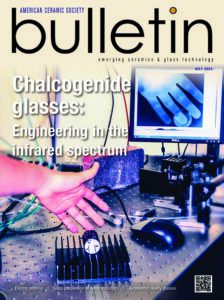
Evan earned his bachelor’s degree in honours mathematics and physics in 2017 at McMaster University in Canada, where he met his eventual PhD Supervisor, Distinguished University Professor Bruce Gaulin. Evan completed his PhD in physics at McMaster University with Dr. Bruce Gaulin in September, 2023.
Evan’s PhD research provides an experimental study of the cerium-based pyrochlore Ce2Zr2O7, using neutron scattering and complimentary experimental techniques to elucidate and study a highly-sought-after quantum spin ice candidate phase in Ce2Zr2O7 near absolute zero temperature. Quantum spin ice is a rare type of magnetic phase in which the spins fluctuate in a quantum-coherent manner down to the lowest obtainable temperatures, with spin disorder that resembles the proton disorder in water ice and with a wealth of interesting physics that accompanies the quantum-coherent disorder.
Evan is currently a postdoctoral researcher under the supervision of Prof. Andrey Zheludev in the Laboratory for Solid State Physics at ETH Zurich in Switzerland, where he began in January, 2024. His postdoctoral research focuses on the study of exotic magnetic behaviour in magnetically frustrated materials using neutron scattering and other useful probes of magnetic behaviour. Evan hopes to continue to grow his experimental skills along with his project design and management skills, with the long-term goal of having his own research group focused on the experimental study of novel and exotic physical phenomena in topical quantum materials.
Title: The Dipole-Octupole Quantum Spin Ice Candidate Ce2Zr2O7
High-energy neutron scattering measurements on the insulating pyrochlore magnet Ce2Zr2O7 reveal that its Ce3+ pseudospin-1/2 degrees of freedom possess dipole-octupole character, making Ce2Zr2O7 a candidate for novel quantum spin ice ground states at low temperature. Muon spin relaxation measurements on single crystal Ce2Zr2O7 show a lack of both magnetic order and spin freezing down to T = 0.02 K. Low-energy inelastic neutron scattering measurements at low temperature are consistent with this result and also reveal a snowflake-like pattern of diffuse scattering that is characteristic of quantum spin ice. Our polarized neutron diffraction measurements separate this diffuse scattering into a star-shaped pattern of diffuse spin-flip scattering and zone-boundary scattering in the non-spin-flip channel. We estimate the terms in the microscopic spin Hamiltonian for Ce2Zr2O7 using heat capacity, magnetic susceptibility, and diffuse neutron scattering measurements combined with theoretical results from numerical linked cluster calculations. Finally, our in-field neutron scattering measurements show that magnetic fields along the [1,-1,0] and [0, 0, 1] directions induce partially-polarized and polarized spin ice phases at low temperatures, respectively, with the partially-polarized spin ice phase being particularly interesting due to the presence of field-decoupled, quasi-one-dimensional quantum spin chains.
Subscribe to Ceramic Tech Today

Don’t miss the latest ceramic and glass materials news. Receive the CTT newsletter to your email three times a week by subscribing at this link.
Subscribe to Ceramic & Glass Manufacturing Weekly

Don’t miss the latest ceramic and glass business news. Receive the C&GM Weekly newsletter to your email every Monday by subscribing at this link.


